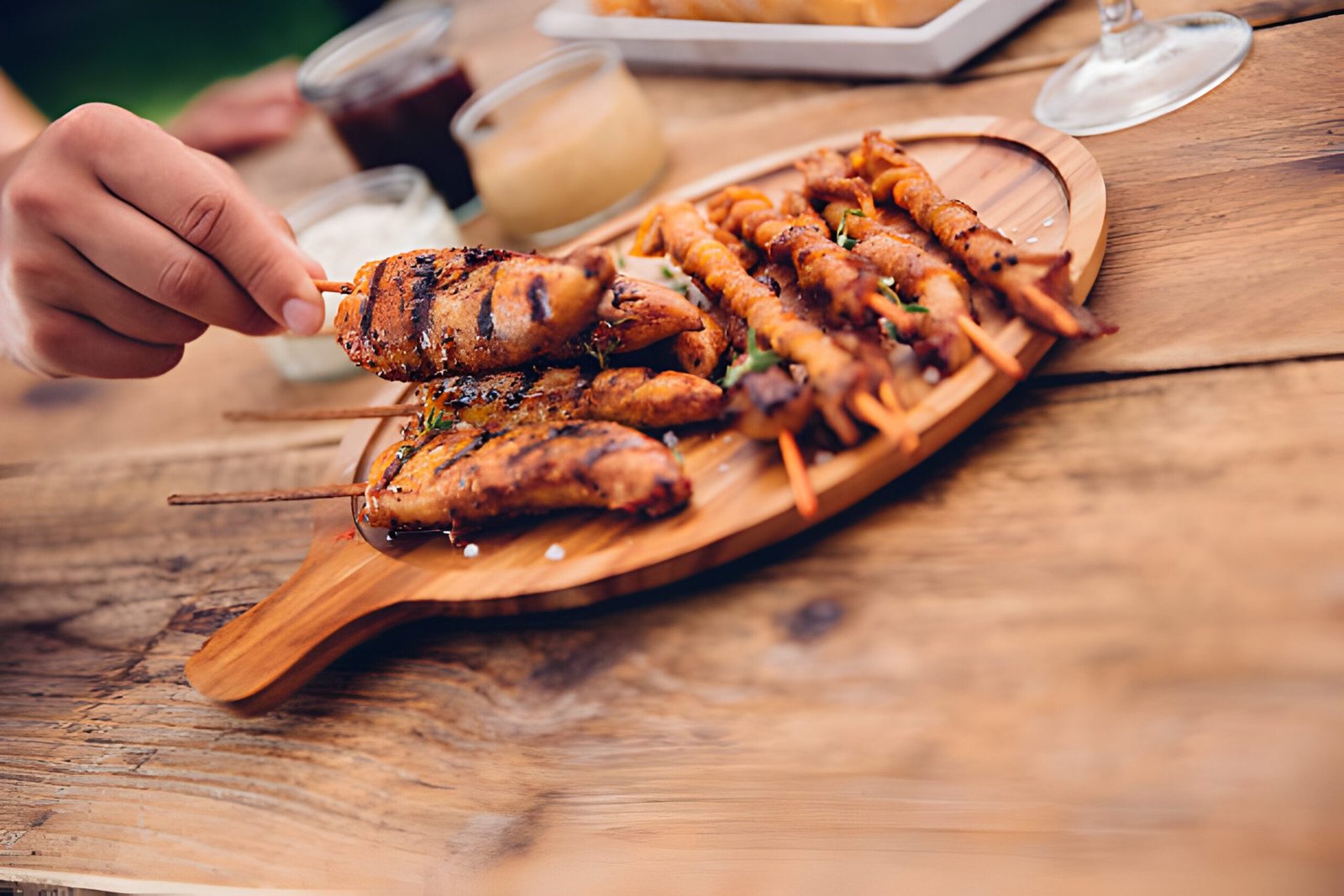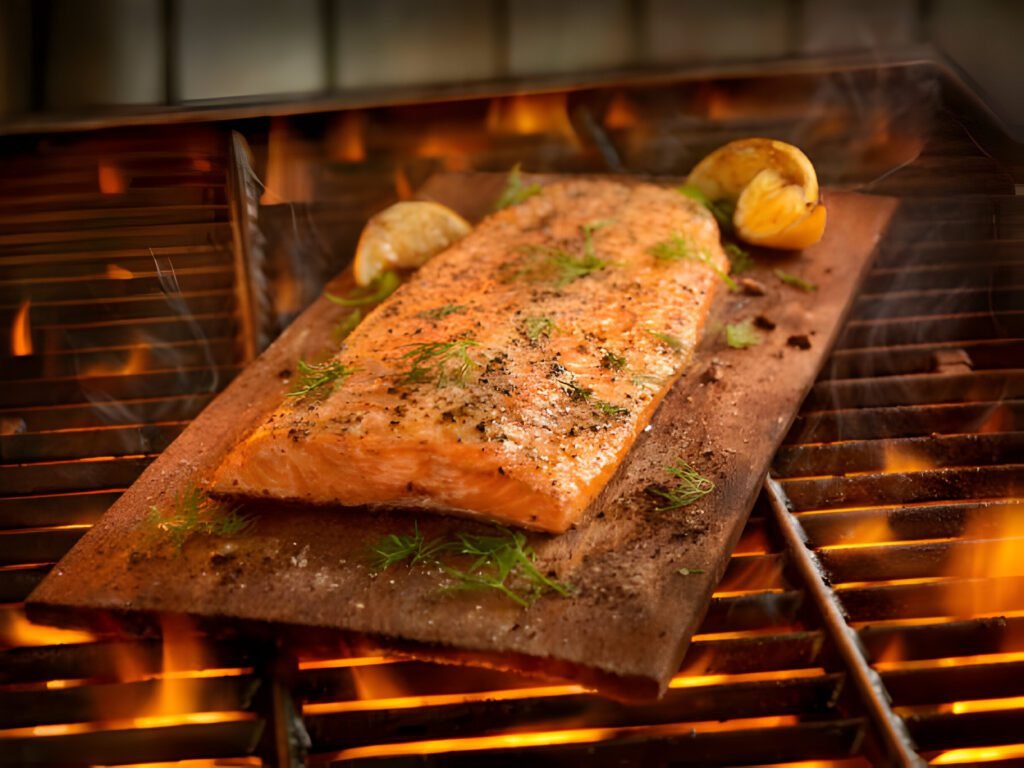Wood Planks for Grilling

Unlocking Flavorful Grilling with Wood Planks
When it comes to grilling, there is no ingredient quite as superb and flavorful as wood planks. Wood plank grilling provides an unrivaled rich, smoky taste that simply cannot be replicated by any other method of outdoor cooking. In fact, the art of using wood planks for grilling has become increasingly popular among culinary enthusiasts in recent years. As such, I would like to delve into the fascinating world of wood plank grilling with you today! Throughout this article we will explore their usefulness and advantages when it comes to outdoor cooking while also providing some helpful tips on how best to achieve successful results. Together let us embark on a journey towards enhancing your very own outdoor culinary endeavors through incorporating the innate flavors provided by these wooden wonders into all manner of dishes served up hot from your grill station!

I. What are Wood Planks for Grilling?
A. Definition and Purpose
- Wood planks for grilling are wooden boards, typically made from untreated hardwoods, that are used as a cooking surface for grilling foods.
- The purpose of using wood planks is to infuse grilled dishes with the unique flavors and aromas of the wood, enhancing the overall taste experience.
B. Types of Wood Planks
- Cedar: Imparts a sweet and aromatic flavor, ideal for seafood such as salmon.
- Maple: Offers a subtle sweetness with hints of caramel, perfect for pork and poultry.
- Hickory: Delivers a bold and smoky flavor, excellent for beef, lamb, and vegetables.
II. Benefits of Using Wood Planks for Grilling
A. Infusing Flavor
- Wood planks add depth and complexity to grilled dishes by infusing them with the natural flavors and aromas of the wood.
- Each type of wood imparts its unique characteristics, allowing for endless flavor combinations and culinary creativity.
B. Moisture Retention
- The porous nature of wood planks helps to lock in moisture, keeping grilled foods juicy and tender throughout the cooking process.
- This moisture retention results in succulent dishes with a melt-in-your-mouth texture that’s sure to impress.
C. Preventing Flare-Ups
- By acting as a barrier between the food and the flames, wood planks help to prevent flare-ups and minimize the risk of charring or burning.
- This gentle cooking method ensures even cooking and allows for precise control over the grilling process.
III. Choosing the Right Wood Plank
A. Consideration of Wood Type
- Select a wood plank that complements the flavors of the ingredients you’ll be grilling, taking into account the intensity of the wood’s flavor.
- Consider experimenting with different wood types to discover your favorite flavor combinations.
B. Size and Thickness
- Choose a wood plank that is large enough to accommodate the food you’ll be grilling, with some extra space around the edges for airflow.
- Opt for a thickness that will withstand the heat of the grill without warping or burning, typically around 1/2 to 3/4 inch.
C. Quality and Source
- Select high-quality, untreated wood planks from reputable sources to ensure food safety and optimal flavor.
- Avoid using planks that have been treated with chemicals or preservatives, as these can impart unwanted flavors and pose health risks.
IV. Preparing Wood Planks for Grilling
A. Soaking Method
- Submerge the wood planks in water for at least 1-2 hours before grilling to prevent them from catching fire on the grill.
- Ensure that the planks are fully submerged and weigh them down with a heavy object if necessary to keep them submerged.
B. Seasoning Method
- For added flavor, season the wood planks by brushing them lightly with olive oil and sprinkling them with herbs, spices, or citrus zest.
- Allow the planks to absorb the seasonings for at least 30 minutes before placing them on the grill.
C. Preheating Process
- Preheat the wood planks on the grill for 2-3 minutes before adding the food to ensure even cooking and prevent sticking.
- This preheating step also helps to release the aromatic oils from the wood, enhancing the flavor of the grilled dishes.
V. How to Grill with Wood Planks
A. Preparing the Grill
- Preheat the grill to medium-high heat (around 350-400°F) and ensure that the grates are clean and well-oiled to prevent sticking.
- Set up the grill for indirect grilling by turning off one burner or placing the coals on one side of the grill, creating a two-zone cooking area.
B. Placing the Planks and Ingredients
- Place the pre-soaked and preheated wood planks directly on the grill grates over the indirect heat zone.
- Arrange the seasoned ingredients, such as fish fillets or chicken breasts, directly on the wood planks, ensuring even spacing for thorough cooking.
C. Monitoring and Adjusting
- Close the grill lid and cook the food according to the recipe, monitoring the temperature and adjusting the heat as needed to maintain a consistent cooking temperature.
- Rotate the wood planks halfway through the cooking process to ensure even cooking and prevent burning on one side.
VI. Creative Recipes Using Wood Planks
A. Cedar-Planked Salmon
- Season salmon fillets with olive oil, lemon zest, and fresh dill, then grill them on cedar planks for a delicate and aromatic flavor.
- Serve the cedar-planked salmon with a side of grilled asparagus and lemon wedges for a light and refreshing meal.
B. Maple-Planked Pork Chops
- Marinate pork chops in a mixture of maple syrup, Dijon mustard, and garlic, then grill them on maple planks for a sweet and savory flavor profile.
- Serve the maple-planked pork chops with roasted sweet potatoes and a tangy apple slaw for a hearty and satisfying meal.
C. Hickory-Planked Vegetables
- Toss a variety of vegetables such as bell peppers, zucchini, and mushrooms with olive oil, balsamic vinegar, and Italian herbs, then grill them on hickory planks for a smoky and robust flavor.
- Serve the hickory-planked vegetables as a side dish or as a topping for salads, pizzas, or sandwiches for a burst of flavor in every bite.
VII. Tips for Successful Grilling with Wood Planks
A. Avoiding Over-Soaking
- Be mindful not to over-soak the wood planks, as this can lead to excessive moisture and a soggy texture in the grilled dishes.
- Aim for a soaking time of 1-2 hours to achieve the perfect balance of moisture retention and smoky flavor.
B. Using Indirect Heat
- Opt for indirect grilling when using wood planks to prevent them from catching fire and ensure even cooking.
- Position the wood planks over the cooler side of the grill to allow the food to cook gently and absorb the flavors of the wood.
C. Experimenting with Flavors
- Get creative with your seasoning and marinade combinations to customize the flavor of your grilled dishes.
- Try pairing different wood types with complementary ingredients to create unique and unforgettable flavor profiles.
VIII. Common Mistakes to Avoid
A. Using Treated Wood
- Avoid using wood planks that have been treated with chemicals or preservatives, as these can impart unwanted flavors and pose health risks.
- Opt for untreated hardwood planks from reputable sources to ensure food safety and optimal flavor.
B. Overcooking or Undercooking
- Keep a close eye on the cooking time and temperature when grilling with wood planks to avoid overcooking or undercooking the food.
- Use a meat thermometer to check for doneness and remove the food from the grill when it reaches the desired internal temperature.
C. Neglecting Safety Precautions
- Exercise caution when handling hot wood planks to prevent burns or injuries.
- Use heat-resistant gloves or tongs to handle the planks and avoid direct contact with the grill or flames.
IX. Conclusion
Grilling with wood planks is not just a cooking method – it’s an experience that elevates the flavors of your favorite dishes to new heights. From cedar-planked salmon to maple-planked pork chops, the possibilities are endless when you harness the natural essence of wood in your outdoor cooking. By choosing the right wood planks, preparing them properly, and following a few simple tips, you can unlock the secrets to flavorful and memorable grilling adventures. So fire up the grill, gather your favorite ingredients, and get ready to savor the irresistible taste of wood-planked perfection. With wood planks for grilling, every meal is a masterpiece waiting to be enjoyed.
